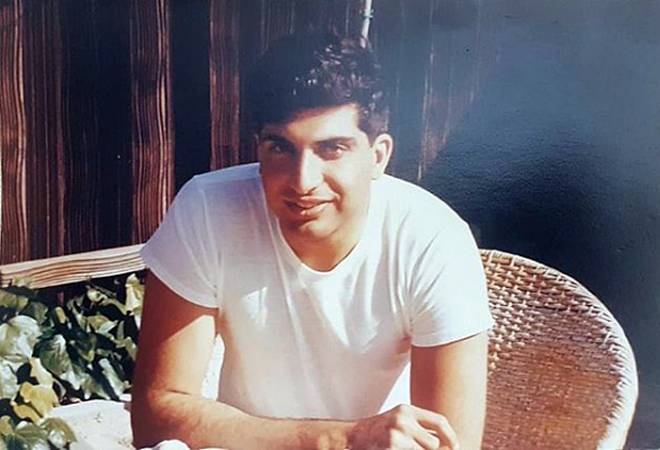Table of Contents
ToggleTop 10 Unknown and Interesting Facts about Ratan Tata
Ratan Naval Tata was a well-known philanthropist, industrialist, and former chairman of the Tata Group from India. From 1991 to 2012, he presided over Tata Sons and Tata Group as Chairman. From October 2016 to February 2017, he held an acting position. His most well-known accomplishment is leading the Tata Group to unprecedented heights with significant acquisitions like Tetley, Jaguar Land Rover, and Corus. India’s highest civilian award, the Padma Bhushan, was given to Ratan Tata in 2000, and the Padma Vibhushan in 2008.

Let’s dive into some of these unknown and interesting facts about Ratan Tata that will give you a deeper insight into his personality and legacy.
1. A Childhood of Struggles and Family Difficulties
Considering his present position and his family’s history, many people might think that Ratan Tata’s upbringing was uneventful. His parents, Naval and Sooni Tata, divorced when he was ten years old. He was born on December 28, 1937. His early years were tumultuous during this time. Lady Navajbai Tata was the grandmother of Ratan and his younger brother, Noel Tata. Young Ratan Tata was greatly impacted by his parents’ divorce, but his grandmother was crucial in forming his morals and beliefs by teaching him the virtues of modesty, tenacity, and strong ethics.
2. Academic History and an Unexpected Career Option
Many people believe that Ratan Tata would inevitably enter the family business because he is a member of the well-known Tata family. Still, his course was not set in stone. Ratan Tata finished his education at Mumbai’s esteemed Cathedral and John Connon School before relocating to the United States to pursue additional studies. That in 1962 he graduated from Cornell University with a degree in architecture may come as a surprise to many who consider him an industrial magnate. His love was architecture, and for a while he was more interested in creating structures than overseeing businesses.
Later, in 1975, he enrolled in Harvard Business School’s Advanced Management Program, which helped to prepare him for the major duties he would eventually take on at Tata Group.
3. Turned down an IBM job offer to join the Tata Group
Ratan Tata began his career in the United States after completing his studies. He was given the opportunity to work at IBM, one of the most prominent IT businesses at the time, while he was just starting out. He declined the handsome offer to become a part of the Tata Group. His entrance into the family firm after returning to India demonstrated his steadfast devotion to the Tata tradition.
Ratan Tata chose to start out on the Tata Steel factory floor in Jamshedpur in order to have a deeper understanding of the day-to-day operations of the company. His viewpoint on management and leadership was formed by this practical experience.
4. The Inventor of the Tata Nano – A Vision for Affordable Cars
The Tata Nano, a project that genuinely demonstrates Ratan Tata’s vision and compassion for the average Indian citizen, is one of his most well-known undertakings. Families that could only afford two-wheelers would now have a safer, more comfortable option with the Nano, which was designed to be the cheapest automobile in the world. When it was first introduced in 2008, the car attracted attention from all around the world for its creative engineering and affordable pricing of about ₹1 lakh (about $2,000).
Despite falling short of commercial expectations, Ratan Tata’s goal to innovate for societal good rather than just profit is demonstrated by the Nano. His concept of a vehicle that would transform transportation for millions of Indians demonstrates his progressive outlook and concern for the underprivileged segments of society.
5. Ratan Tata’s Passion for Aviation
An often overlooked facet of Ratan Tata’s character is his ardent love of aviation. He is a good pilot who still enjoys flying after obtaining his pilot’s license in India in 1974. His deep connection with J.R.D. Tata, the founder of Tata Airlines (now Air India) and the first Indian to obtain a commercial pilot’s license, is frequently associated with his passion of aviation.
Ratan Tata flew the American F-16 Falcon fighter jet for the first time as an Indian in 2007. This accomplishment highlights not only his passion for flying but also his spirit of adventure and readiness to take on challenges outside of the professional sector.

6. A Humble and Private Lifestyle
Ratan Tata is a very wealthy and successful man, but he maintains a very modest and secluded life. Tata is renowned for his simplicity, in contrast to many other billionaires who are frequently in the spotlight due to their lavish lifestyles. With his dogs by his side, he shares a humble bachelor home in Mumbai. His everyday activities are far from the ostentatiousness that one would anticipate from a person of his caliber.
In interviews, he has stated that he lives a very private life away from the spotlight. Ratan Tata’s modesty transcends his personal life; he rarely discusses his charitable contributions or the positive effects of his humanitarian endeavors, opting to keep such details confidential.
7. The Man Who Almost Got Married Four Times: An Unfulfilled Love Life
Ratan Tata never got married, although there were moments in his life when he almost did. Tata has said in interviews that he was on the verge of marriage four times, but the unions fell through for a variety of reasons. He previously spoke of a serious romantic relationship that started when he was living in Los Angeles and nearly got married to an American woman. However, Ratan was forced to return to India because of his family’s needs and the 1962 India-China War. The romance did not ultimately result in marriage due to the considerable distance and other obstacles.
Tata has never married and has dedicated most of his time to his career, charitable activity, and hobbies such as aviation and architecture.
8. A Philanthropist at Heart – His Involvement in Giving Back
Despite his reputation as a prosperous businessman, Ratan Tata’s charitable contributions may be his greatest contribution. The Tata Group has carried on its founder Jamsetji Tata’s tradition of socially conscious business practices under his direction. Ratan Tata’s conviction that “What comes from the people should go back to the people many times over” embodies his charitable mindset.
The Tata Group made one of the biggest donations to Harvard Business School in its history in 2010 when it gave the school $50 million. Tata has also supported causes in India and around the world, including healthcare, education, and rural development.
One of the biggest philanthropic groups in India is the Tata Trusts, which hold over 66% of the shares of Tata Sons. These trusts, which are directed by Ratan Tata’s vision, concentrate on a variety of topics, such as healthcare, education, and clean water and sanitation. Ratan Tata’s philanthropic endeavors are guided by his enduring belief that the foremost objective of wealth ought to be the enhancement of others’ quality of life.
9. Recipient of India’s Highest Civilian Awards
The achievements that Ratan Tata has made to business and society are well acknowledged. A number of India’s most esteemed honors have been bestowed to him, such as the Padma Bhushan in 2000 and the Padma Vibhushan in 2008, which rank third and second among civilian awards in India, respectively. These accolades commemorate his entrepreneurial endeavors, his contributions to the economic growth of India, and his charitable endeavors.
He has gained immense respect in Indian society for his leadership in leading the Tata Group to success on a worldwide scale and his personal dedication to humanitarian initiatives. These honors are a monument to Ratan Tata’s devotion to his nation and his influence on the social cohesion and economics of India.
10. Global Expansion and Acquisitions – Corus Steel, Jaguar, and Land Rover
Ratan Tata‘s emphasis on globalization was a fundamental feature of his leadership at Tata Group. Tata Steel and Tata Motors made some of the biggest overseas purchases by an Indian corporation under his direction. When Tata Motors bought Jaguar and Land Rover from Ford Motor Company in 2008, the international business community took notice. Many people are unaware that Ratan Tata himself negotiated this agreement, having faith in these companies’ potential when others had doubts about their viability.
In a similar vein, the largest acquisition made by an Indian corporation at the time was Tata Steel’s $12 billion purchase of Corus Steel in 2007. Through these purchases, the Tata Group increased its global presence and established India as a major force in the world’s business community.
People Also Ask:
Is Ratan Tata an adopted son?
Naval and Soonoo Tata were the parents of Ratan Tata. His grandmother, Navajbai Tata, who was Ratanji Tata’s widow, raised and adopted him when he was ten years old.
Who inherits Ratan Tata?
The general belief is that Noel Tata, Ratan’s half-brother, will take over general management of the Tata group upon his death. This is in contrast to Natarajan Chandrasekaran, chairperson of Tata Sons, who is capable of handling day-to-day operations of the business. Yet, things are not always cut and dry. Unless he left a note in his will, Ratan, like many before him, left no clear succession plan for who would take over his role. Furthermore, he had no direct ownership in Tata Sons stock that he might leave to a successor.

